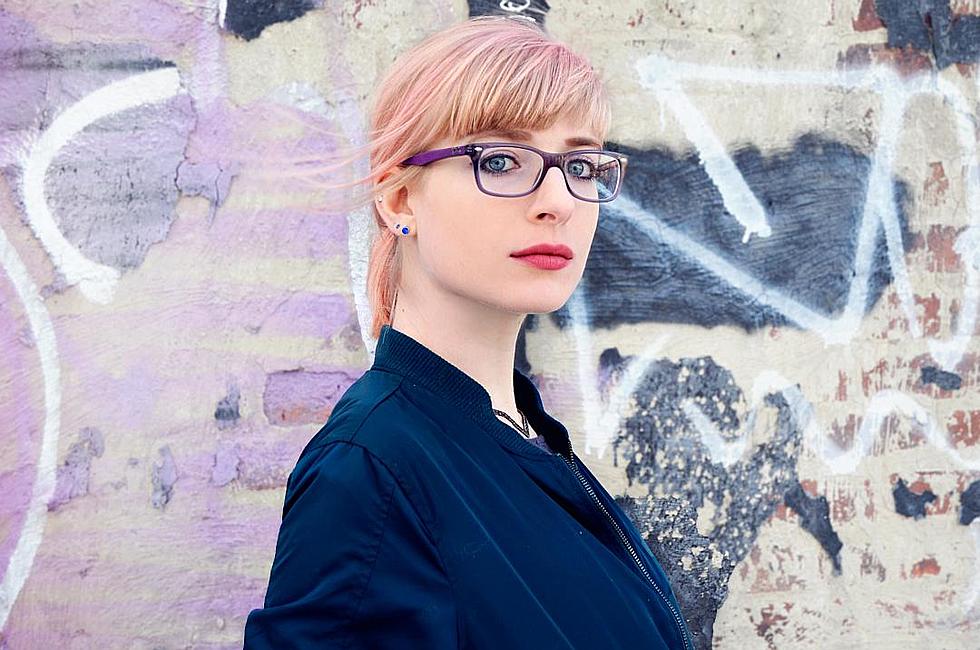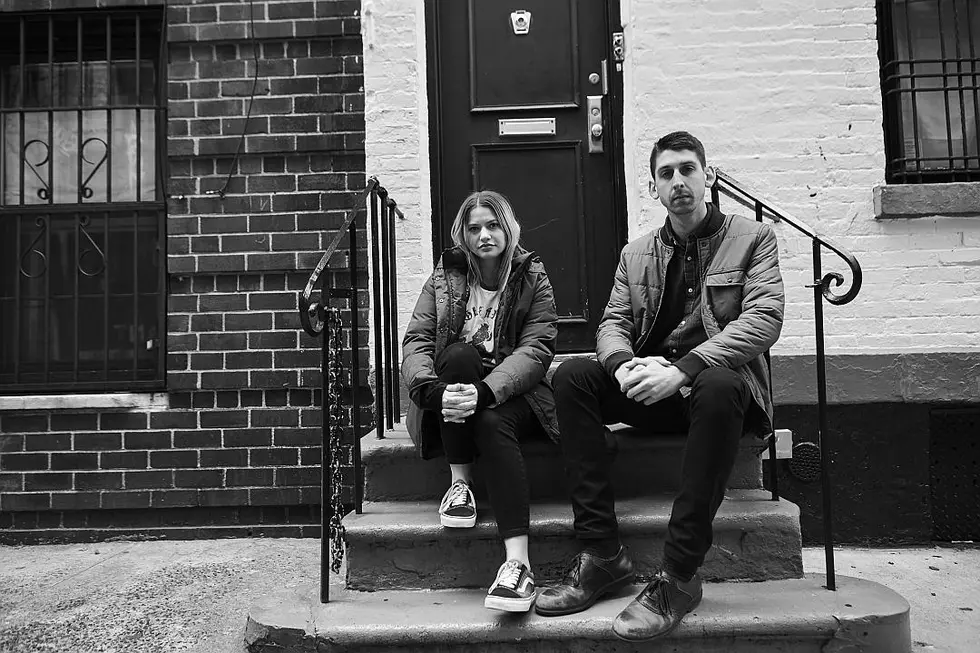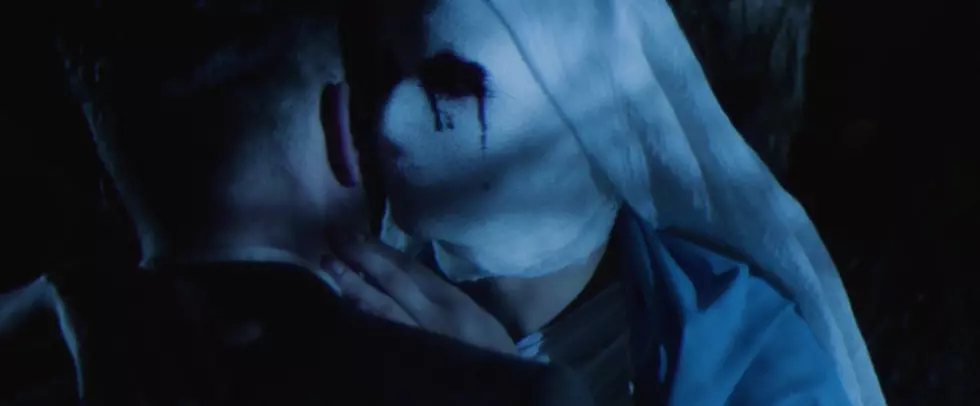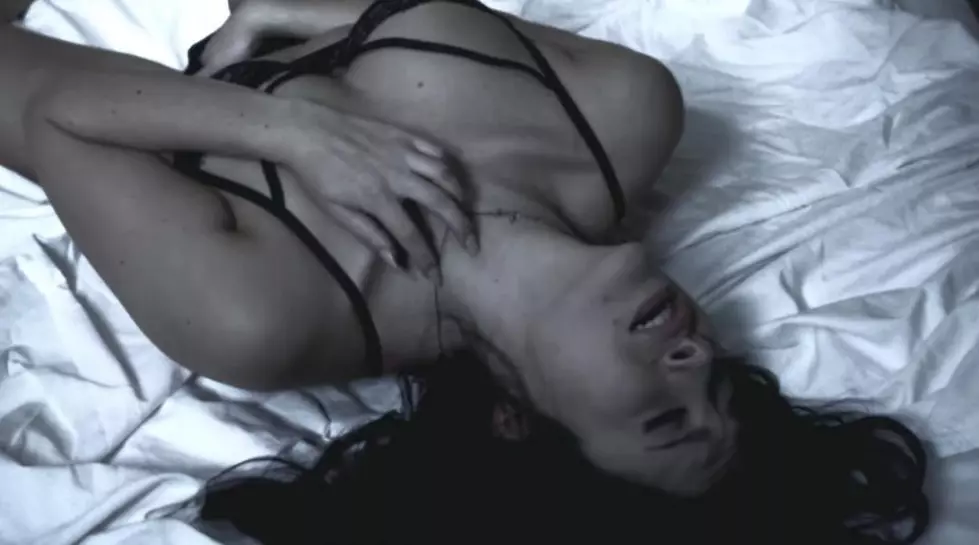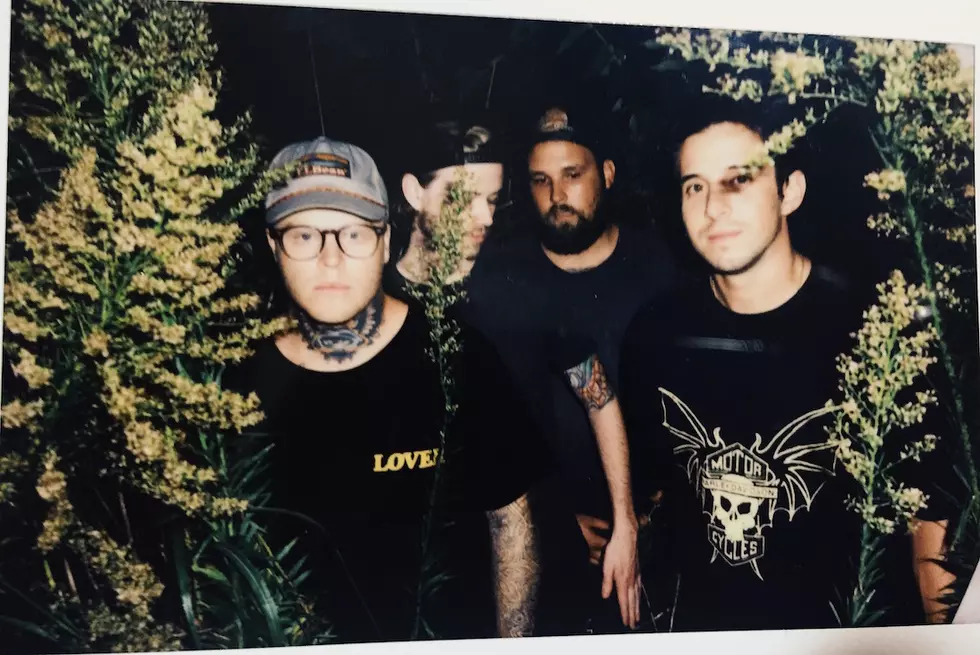
Pavilion Forgo the Distance With ‘Charmed Circle’
Being divided among three separate countries is not stopping Pavilion from releasing new material. In fact, though its members live in London, New York and Toronto, the group just self-released a five-song cassette this month called Charmed Circle, their most developed and refined record yet.
Pavilion formed in Toronto after two longstanding members of the city’s punk scene, Grace Lisa Scott and Julie MacKinnon, decided they were well overdue to start a band. They quickly recruited Jonah Falco and Mike Grdosic into the fold to fill out their ranks, and announced their arrival in the spring of 2015 with the Mercury Girls demo, an impressive collection of spidery, gothy songs built around the contour of Scott’s voice. Charmed Circle finds the band filling out that sound, making use of a proper studio and production to give their songs the room they truly need. Four of the songs are brand new, while the fifth and final track, the hooky and infinitely repeatable “Pale Shades of Green,” is on a victory lap after first appearing on their demo.
We spoke to Scott, who recently relocated from Toronto to New York, about the challenges and benefits that come with being in a band split among three different countries, the “charmed circle” of collaborators outside of Pavilion and their visual aesthetic.
You recently left Toronto for New York, and Jonah has moved to the U.K. When was this material written and recorded?
Before Jonah and I both left for our respective new situations, we wanted to finish a bunch of songs that we’d been working on for a while and just lock it down. So, before I moved to New York, we recorded the majority of it with Josh Korody in a couple of different studios in Toronto. It was right after we came back from doing a little West Coast tour at the end of June. And then, Jonah was in town, in New York, to play a couple of Career Suicide shows in mid-July, so we finished a bunch of extra vocal stuff with this guy Mike Kutchman at his studio in Greenpoint — just the last finishing touches. Then Jonah did a little bit of extra guitar stuff back in Toronto without me after I’d left. So, it was like a monthlong process.
And you were saying that these songs were written around the same time as the ones you’ve previously put out?
Well, we’ve always written as we’ve gone. There’s never really been a point with the band where we’ve stopped writing, because we never wanted to go through the same set all the time. All of the material that’s going to be released on this cassette is stuff that we wrote over the spring leading up to us going on that small tour. Jonah and I got into a really nice habit — this is a really fond memory for me — of meeting up once a week at noon and getting a coffee at the shop down the street from our rehearsal space, and [we'd] just go to the space and write for two hours, and then get together with the whole band at another day later in the week to go through the stuff that we’ve been writing. We were getting really into the routine of that for awhile there.
So, when it came time to record, you were saying you went with Josh Korody. That’s a name that comes up a lot in Toronto. His name is synonymous with a specific sound, that whole group of HDD bands obsessed with shoegaze. Did you decide to work with him because you wanted a certain sound?
I think that it seemed like an organic choice. He and Jonah know each other decently well, and I had never met him before working with him on this. But I knew that he’d come to a couple of our shows. We played with a side project of his called Nailbiter, and I’d heard of him and knew that he was interested in the same kind of musical aesthetics as I am. That was really obvious once we’d started recording together. He had a pretty solid concept of what I wanted, especially in terms of how he was really conscientious of how the vocals sounded, and I felt like he was a very easy person to work with, and like we were on the same page with everything. It was a really good experience.
How did you connect with Mike Kutchman and Ben Greenberg?
So, Mike helped us with the vocals at Kutch1, and was just a recommendation from a friend here in New York. It was just a day he let Jonah and I use the studio and record stuff, and was pretty hands-off. But then to mix the record, I reached out to Ben Greenberg, and that was more of a situation where I knew some of the stuff he’d worked on before, and knew of him as a producer. He has a lot of great work under his belt, and I felt like it’d be very easy to communicate exactly what I wanted.
Four out of the five songs on the record are new. The last one, “Pale Shades of Green,” was on your demo. What was it about that song in particular that you wanted to record again or refine?
It was a bit of both. I wanted to round [the cassette] out with five songs, and I think that song stands on its own in an interesting way more than some of the other stuff does. When we started playing it live, we started slowing it down — intentionally or not, I’m not entirely sure, but it was having a different sort of pacing when we were playing it live than it had when we recorded it originally. That’s the funny thing about always recording as we go — there’s a lot of stuff that gets worked out later, and I’ll listen back to some of the things we’ve recorded and just be like, “Ohhhhh yeah, at the time that seemed like a good idea, but now it’s not how I want to play that whatsoever.” With “Pale Shades of Green,” it’s just this catchy song. People have hummed it to me enough times that I thought it would be really fun to give it more of a studio treatment. Everything we’d recorded up until that point had been done in Jonah’s practice space, the carpeted, concrete box in which we lived for the last two years. So, getting to use a real studio, real studio equipment, and have it be mixed and produced properly was just a very different experience, and it gives you so much more space, and “Pale Shades” was the obvious choice to fuck with some more.
Was this more of a group process than the Mercury Girls demo you put out? You mentioned writing with Jonah and then bringing those pieces to the rest of the band.
Yeah, that started to become more of the routine, and it seemed to work pretty well for us. Everyone brings their own elements, and things change when you bring that nugget of an idea [you've] worked out to everybody else. Julie will be like, “What if we just put this here or switch that there,” and you’re like, “Okay, that makes sense.” Everybody has a voice and a say in how things sound.
What are the challenges of having a band whose members live in three different countries?
There are a lot of challenges. With Jonah being in school in London and me being here for the foreseeable future, Pavilion exists as a recording project at this point. I really like these songs a lot. I’m really proud of them, so I wanted them to exist in the physical world, and I felt that was worth it unto itself. Whether we’ll do stuff in the future is yet to be determined. I don’t think that anybody in the band is against that idea; it’s just so complicated with all of us not being in the same place. It’s unfortunate, because I really, really loved making music with those people, and I think we had a lot of great experiences and a lot of firsts for some of us. So, it definitely means a lot to everybody.
I guess there are some benefits to the distance between members, too, since part of the rollout of this release involves putting out the tape in three different cities. It seems like the distance between bandmates allows you to have your own mini-distro.
Yeah, totally, a Pavilion distro, very convenient. I always felt like Pavilion was such a Toronto project; it’s cool now that it can live in different worlds as well.
Does having a band whose home base is Toronto keep you grounded to that city in some way? You’re from Calgary, you live in New York, Toronto’s not really home, but does having a band that’s centered there keep you connected?
It definitely makes me sentimental for the city in a lot of ways. This is kind of dramatic-sounding, but Pavilion was the only good thing about living in Toronto for me in the last couple of years. I spent the majority of my waking hours not necessarily writing or practicing with them, but just spending time with the band, because they were my best friends in the city. So much of what I identify with Toronto is also what I identify directly with Pavilion anyway. My other band, Siyahkal, was also another great thing for me when I was in Toronto. They’re killing it, and I’m so happy for them. I think they have a cassette coming out very soon, actually.
For your last tape, you and Julie directed a video for the song “Hyacinth,” and I know you’re in the midst of directing another for “Charmed Circle.” Musically, the band is drawing from post-punk and goth music, but do those styles also inform your visuals?
So, the “Hyacinth” video was this trippy group concept between me, Mike and Julie, and our friend Alican Koc, who’s in that band the Brain, and our friend Steven Conway, who’s the dancer in the video. We imagined this strange, mystical, tragedian Pavilion world where these characters meet and live out this very dramatic conceptual relationship. The concept is loosely based on the Greek myth of Hyacinth. It’s an homage to early Kenneth Anger stuff, and utilizes a lot of the themes from Pavilion’s music, which is, like, beauty, and femininity and dance. We were trying to channel this over-the-top, tragic, Romanesque, mystic clown vibe in the video. I think we pulled it off pretty well.
The newest video is not as bizarre in theory or concept, and is a project that my friend Guillaume Carlier is working on and directing. He’s shooting it, directing it, and is producing it — it’s all him. He’s a friend of mine who is a filmmaker in Calgary and has made videos for friends of mine who I think are in pretty great bands, like Feel Alright. We just wanted to collaborate on something together. We’ve been friends for our whole lives and never had an opportunity to do something like that. While I was in Calgary, we decided to work on this Pavilion video together. It’s a very abstract video that uses a combination of footage of me singing the song, and then also archival footage of the band playing shows, as well as photographic imagery of us. I’m really excited to see how it turns out; I’m not really sure how it will look. I just drank a lot of scotch and lip-synced one night at four in the morning, so I’m putting a lot of faith in him that he doesn’t make me look too terrible. [Laughs]
I think one of the coolest things about being in a band is that you have this opportunity, outside of the music you’re making, to always be collaborating with a lot of people that you’re really interested in the work that they make. It’s this great connecting force between you and anybody else that you’re friends with, to make more things in a way that can benefit them and that can benefit you.
More From CLRVYNT
